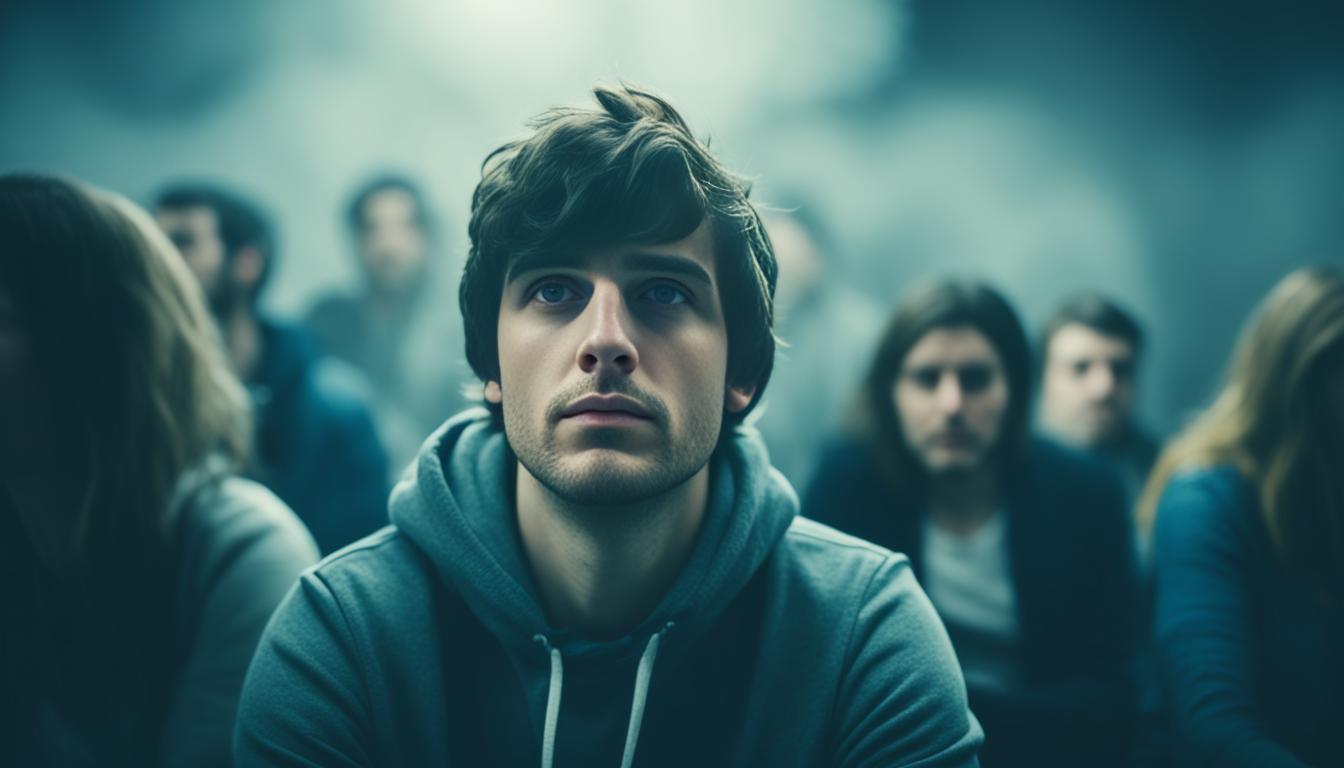Social anxiety disorder, known as social phobia, impacts about 7% of U.S. adults. It causes intense fear in social situations. This fear stems from the worry of being judged or embarrassed by others.
The cause of social phobia is a mix of genetic, biological, and environmental factors. If it runs in your family, you might be more prone to it. Events that shake you or growing up with little social interaction can also lead to social phobia.
Social phobia can radically change how someone lives their life. It makes engaging in social events hard and can cause a lot of distress. However, this condition is treatable. Cognitive-behavioral therapy is one effective method. For some, stem cell therapy is also showing promise, offering new treatment paths.
Key Takeaways:
- Social anxiety disorder, or social phobia, affects around 7% of adults in the U.S.
- Genetic, biological, and environmental factors contribute to the development of social phobia.
- Treatment for social phobia includes cognitive-behavioral therapy and innovative options like stem cell therapy.
- Social phobia can have a significant impact on a person’s daily life.
- Seeking treatment is crucial for effectively managing social phobia.
Understanding the Causes of Social Phobia
Social phobia’s causes are complicated, involving genes, surroundings, and culture. It’s a mix of what we inherit and what we learn that leads to this issue. So, our family history and how we grow up matter.
Genetic factors are a big piece of the puzzle. If social anxiety runs in your family, you might face it too. Science says genes could be behind 27% to 56% of why we get social anxiety. These genetic bits might just be the things that make some of us more sensitive to this fear.
Environmental factors are also key. Bad events, like being bullied or embarrassed in public, can change how you see social situations. Growing up with few friends or isolated could also make it harder to handle social life.
Kids who are always shy and avoid new things might later develop social phobia. This hint of anxiety early on could grow into full social anxiety disorder.
Societal factors can add to these worries, too. The culture we’re part of and what we’re expected to do in social groups can affect how anxious we feel. Places where being part of a group is super important might have more people with social phobia.
It’s crucial to know all these causes to treat social phobia well. Mixing care for both our genes and how we’ve lived might just be the key here. This way, the right treatment can be offered to address what really causes this condition.
| Causes of Social Phobia | Percentage Contribution |
|---|---|
| Genetic Factors | 27% to 56% |
| Environmental Factors | Variable |
| Behavioral Inhibition | Increased Risk |
| Societal Factors | Cultural Influence |
The Role of Brain Function in Social Phobia
Research has shown the brain plays a key role in social phobia. Studies like neuroimaging have found that the brains of those with social anxiety differ from others. These differences include brain area activities and chemical levels.
For instance, brain scans show that people with social phobia have more activity in the amygdala. This is the part of the brain linked to fear. On the flip side, those without social phobia have a more active cerebral cortex. The cortex deals with thinking and decision-making.
This means the brains of people with social phobia respond differently to social settings. Moreover, there are imbalances in important brain chemicals like serotonin in these individuals. Looking at how the brain works in social phobia can guide new treatments. These treatments might focus on balancing brain chemicals or improving how different brain areas work together.

